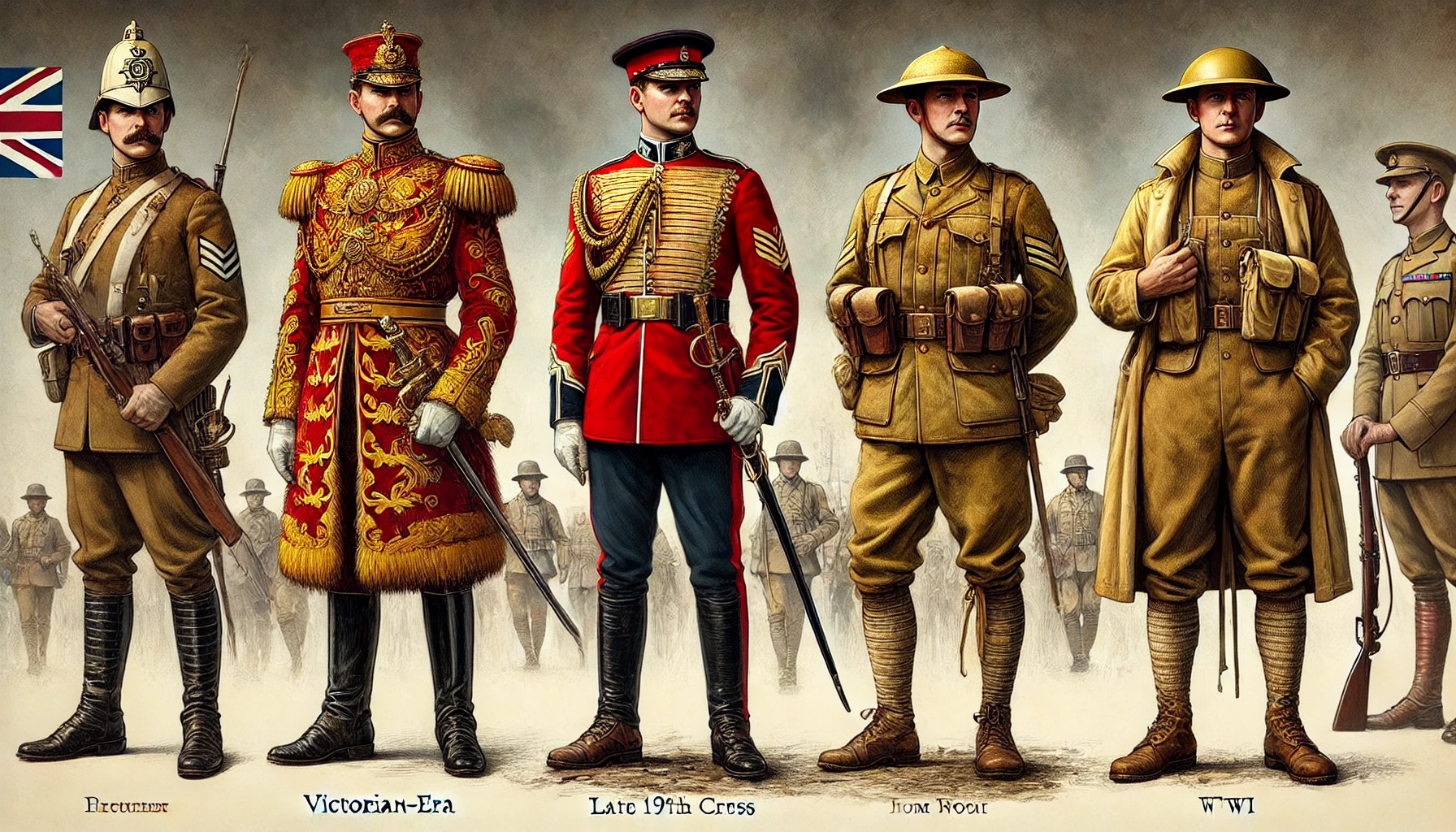
The Evolution of British Officer Uniforms: From the Victorian Era to WWI
Published on Mar 12, 2025
The Evolution of British Officer Uniforms: From the Victorian Era to WWI
Introduction
Military uniforms have long symbolised authority, discipline, and identity. The evolution of British officer uniforms from the Victorian era to the First World War reflects changes in warfare and technological advancements in textiles, weaponry, and battlefield strategies. Similarly, Civil War uniforms tell the story of national division, strategic necessity, and evolving military fashion. In this article, we explore the transformation of military attire across these pivotal periods.
Victorian Era Military Clothing: Tradition Meets Elegance
The Victorian era (1837–1901) was a time of imperial expansion for Britain, and military uniforms during this period emphasized prestige and tradition. British officer uniforms were characterized by elaborate embellishments, bright colours, and intricate designs that reflected rank and regiment.
Key Features of Victorian British Officer Uniforms:
- Scarlet Red Tunics – The red coat became synonymous with British military power, often adorned with gold braiding and epaulettes.
- High-Collared Jackets – Officers wore stiff, high collars emphasising formality and rank distinction.
- Braided Gold Accents – Many officers had gold-laced tunics and cuffs, especially in prestigious regiments.
- Bearskin and Shako Hats – Tall, elaborate hats were worn during parades and official events, symbolizing status.
- Sabers and Sashes – Officers often carried ceremonial swords and wore sashes denoting rank and service.
While these uniforms exuded grandeur, they were not the most practical on the battlefield. Their bright colours made soldiers easy targets, leading to changes in military attire as the need for camouflage became apparent.
The Transformation During the Civil War (1861–1865)
The American Civil War saw a major shift in military uniforms as practicality took precedence over ornamentation. The Union and Confederate armies adopted distinct clothing styles suited to battlefield conditions.
Union Army Uniforms:
- Dark navy blue wool jackets and sky-blue trousers.
- Brass buttons with the eagle insignia.
- Kepi caps or forage hats for protection.
Confederate Army Uniforms:
- Predominantly grey or butternut-coloured coats.
- Slouch hats for sun protection.
- Simple, functional designs due to limited resources.
Unlike the British, Civil War uniforms reflected necessity rather than prestige. Limited supplies and rapid enlistment led to inconsistent styles, with soldiers modifying uniforms based on conditions.
WWI British Officer Uniforms: A Shift to Practicality
By the outbreak of World War I in 1914, British military uniforms had undergone significant changes to adapt to modern warfare.
Key Changes in WWI British Officer Uniforms:
- Khaki Service Dress – The bright red tunics of the Victorian era were replaced with practical khaki uniforms to provide camouflage on the battlefield.
- Sam Browne Belt – A leather belt worn diagonally across the chest, allowing officers to carry sidearms and other essentials.
- Trench Coats – Designed for harsh battlefield conditions, trench coats provided extra protection against the elements.
- Brodie Helmets – Introduced in 1915, these steel helmets offered superior protection against shrapnel.
- Putties and Sturdy Boots – Long cloth wraps (puttees) were worn around the lower legs for extra support and protection in muddy trenches.
WWI uniforms marked the beginning of practical military attire, prioritizing soldier safety and battlefield efficiency over aesthetics.
The Legacy of Historical Military Uniforms
The evolution of British officer uniforms and Civil War attire demonstrates how necessity, technological advancements, and the realities of warfare shape military fashion. From the ornate Victorian designs to the practical WWI khaki service dress, these uniforms tell the story of shifting military strategies and battlefield demands.
These uniforms offer a fascinating glimpse into military history for collectors, historians, and reenactors. Whether you're interested in Victorian military elegance, Civil War simplicity, or WWI practicality, these uniforms serve as enduring symbols of their respective eras.
Conclusion
British officer uniforms have undergone immense transformations from the gilded Victorian era to the muddy trenches of WWI. Similarly, Civil War uniforms reflect a unique period of American history where necessity dictated style. Understanding these changes enriches our appreciation of military history and sheds light on the evolution of warfare itself.
